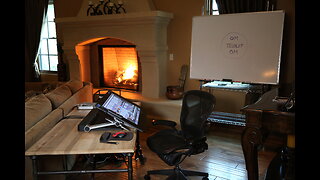Bumpass Hell - Lassen Volcanic National Park | California Travel Tips
Veronica Hill of California Travel Tips shares a travel guide to the Bumpass Hell Trail. This is the signature hike in Lassen Volcanic National Park, and one of the most active geothermal areas in California.
Get on your best walking shoes for the 3-mile round trip hike, which passes glacial Lake Helen and climbs 500 feet before descending 250 feet into Bumpass Hell.
This 16-acre hydrothermal area sits on the eroded vent of Bumpass Mountain, a dormant dome volcano. Here, you'll find more than 75 fumaroles, turquoise-colored hot springs and mud pots fired by molten lava just 5 miles below the surface. This is the same magma system that fed Lassen Peak's eruptions between 1914 and 1922.
This area was named for Kendall Bumpass, who lost his leg after falling into a boiling mud pot. Bumpass discovered the area in 1864 while hiking, and he called the place "Hell." The name stuck.
Mudpots are essentially the bridge between a boiling spring and a fumarole steam vent. Once solid lava, the bubbling mud pots have been softened by heat, gas and water. During a dry season the mud pots harden up and emit steam as a fumarole. During a wet year, they become more saturated and take the form of a boiling spring.
The boiling pool is one of many unique features in the park. Although the temperatures of these hot spring pools vary, most fall between 150 and 200 degrees Farenheit. It's hard to believe, but bacteria can still live in these acid sulfate pools.
As you walk along the boardwalk, you'll see evidence of the volcanic features that have shaped Lassen's landscape. A highlight is Big Boiler, which is the largest fumarole in the park, and the hottest in the world for a non-erupting volcano. Scientists have recorded steam temperatures as high as 322 degrees Farenheit.
Fumaroles are created when magma or hot rocks mix with geothermal springs, creating an eruption of hot steam and gases. One thing you'll definitely notice is the rotten egg smell; that's hydrogen sulfide gas. The white and orange crust on the ground is formed by evaporated sulfate-rich water.
One word of advice: Stay on the boardwalks and trails. People are severely burned each year when they ignore this caution, and it's a long hike plus car drive to the nearest first aid area.
STAY IN TOUCH WITH CALIFORNIA TRAVEL TIPS
SUBSCRIBE! http://tinyurl.com/p2fveuj
LIKE ME ON FACEBOOK http://tinyurl.com/nqx9osq
FOLLOW ME ON TWITTER https://twitter.com/Californiatips
FOLLOW ME ON INSTAGRAM http://instagram.com/californiatraveltips
-
 LIVE
LIVE
Jewels Jones Live
23 hours agoDETRANS w/ special guest Mary Margaret Olohan | A Political Rendezvous - Ep. 78
1,225 watching -
 1:36:46
1:36:46
Roseanne Barr
21 hours ago $73.82 earnedFor Love of Country with Tulsi Gabbard | The Roseanne Barr Podcast #50
114K259 -
![[D2] Onslaught Grind w/ Some PvP before Final Shape](https://hugh.cdn.rumble.cloud/s/fw/s8/1/5/g/l/6/5gl6r.0kob-small-D2-Onslaught-Grind-w-Some-P.jpg) LIVE
LIVE
CHiLi XDD
6 hours ago[D2] Onslaught Grind w/ Some PvP before Final Shape
977 watching -
 2:45
2:45
Chicks in the Office
4 hours agoHolly Madison Talks Reconciliation with Kendra Wilkinson
24.1K25 -
 LIVE
LIVE
Di bear
6 hours agoFinal Season Mission, Pantheon | Destiny 2
858 watching -
 6:54:43
6:54:43
SquallRush
8 hours agoAthenian Rhapsody!
26K6 -
 1:47:01
1:47:01
Real Coffee With Scott Adams
6 hours agoEpisode 2492 CWSA 06/01/24
33.7K34 -
 2:08:10
2:08:10
LFA TV
7 hours agoEP 47: Miles Guo Trial Special with Special Guests - Truth, Betrayal, and Fox Hunt | WHISTLE BLOWERS 6.01.24 12pm EST
26.1K12 -
 1:13:59
1:13:59
Tactical Advisor
5 hours agoVault Room Tour/Unboxing- Vault Room Live Stream
26.8K2 -
 1:11:28
1:11:28
The Squad
12 hours agoArsenal's Huge Summer🚨Olise to Man Utd DEAL✅ Osimhen to Arsenal or Chelsea☑️ UCL Final Preview
39K7